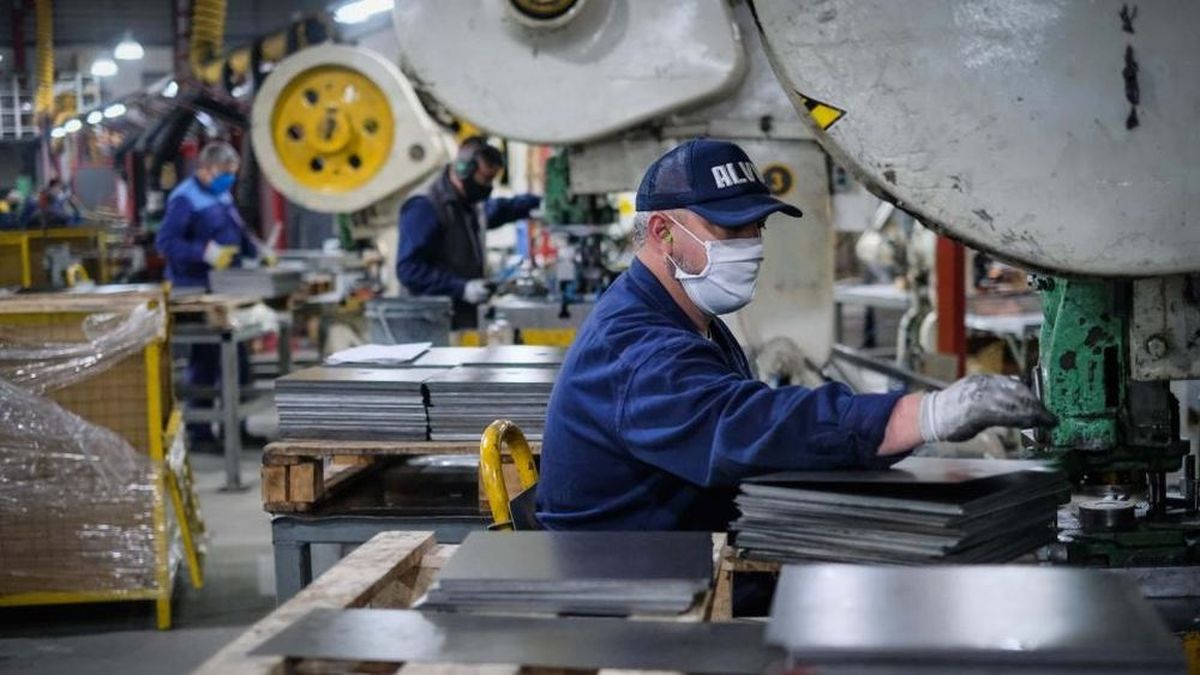The sector has 1,186,400 formal jobs, according to data from the Argentine Integrated Pension System. Sergio Massa accelerates the search for foreign currency to sustain the rebound in production.
Industrial employment grew again in April and exceeded 1,186,400 registered positions, according to data from the Ministry of Labor that Ámbito was able to access. With a jump of 3.4%, it stood at the highest level in five years for the manufacturing sector. The importation of inputs is accelerated and the minister Sergio Massa explores different ways to accumulate foreign currency and sustain production. Meanwhile, a technical team from Economy travels to Washington to adjust details of the agreement with the IMF, while they continue the negotiations with Brazil and analyze incentives to improve the liquidation of agriculture.
The content you want to access is exclusive to subscribers.
Despite the harsh impact of the drought and the contraction in spending that the Government has been carrying out to order the fiscal front, activity continues to show signs of recovery. A witness sector is the industrywhich is at record levels of use of installed capacity, with a considerable flow of investment and which has chained 35 consecutive months of growth in registered private employment.


According to the latest report from the Ministry of Labor, which is based on data from the Argentine Integrated Pension System (SIPA), the number of formal workers in the industrial sector grew 3.4% in year-on-year terms in April of 2023 and 0.2% compared to March of this year. With this jump, the sector exceeded 1,186,400 jobs and reached the highest level in 5 years.
Since it is known that climatic events will deprive Argentina of the income of some US$20,000 million this year, the permanent doubt in the markets is whether the level of imports that the economy needs to function. In conversations between businessmen, the issue of purchases abroad is a common topic. Although this week at the executive committee meeting of one of the industrial chambers they recognized that access to inputs has accelerated strongly in recent months.
An internal report from the Ministry of Economy to which Ámbito was able to access reflects the state of the situation. From January to May, 88% of the import requests that were processed were approved and the figure is even higher if only the category of inputs is measured. At the same time, purchase authorizations abroad had an increase of 14% year-on-year in dollars during the same period.
It is clear that with a local industry that has at least 15% imported inputs, holding foreign currency in the Central Bank is the fuel to sustain activity and at the same time a relevant factor to stabilize the macro. Beyond the fact that trade in yuan is being promoted and is growing rapidly, The economic team’s priority today is to get fresh dollars.
One of the avenues being explored is the renegotiation of the agreement with the International Monetary Fund, which could include an advance on disbursements. After canceling the June deadline, the agency issued a statement acknowledging that “technical discussions continue on a package of policies to safeguard economic stability.” A technical team from the Ministry of the Economy headed by Gabriel Rubinstein and Leonardo Madcur will leave early this week for Washington to advance in this direction.
In the options menu also appears the postponed agreement with Brazil. In August the BRICS should analyze the entry of Argentina to the Development Bank of that bloc, which would eventually grant guarantees to obtain financing from neighboring country entities for bilateral trade. In recent days, Minister Massa met with Ambassador Daniel Scioli to speed up the negotiations.
To speed up the settlement of foreign exchange, the Government also looks to the agroindustry. In the conversations between businessmen and members of the economic team, they again spoke of some tool to encourage exports. In this context, the possibility of removing withholding taxes on wheat and corn and the possibility of a new version of the soybean dollar were put on the table. Although there are still no definitions.
Source: Ambito




